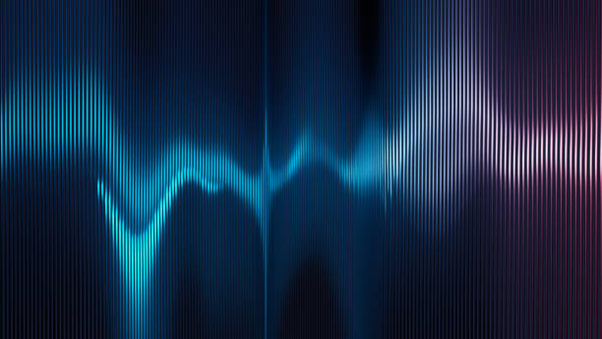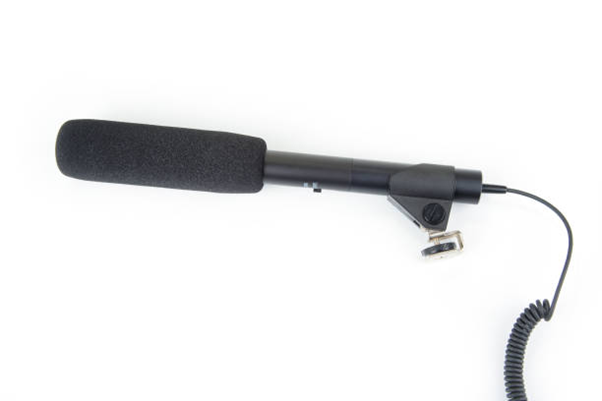Our different Windscreens offers

Outdoor windscreen for mic? The best foam windscreens
Professional microphones are indispensable when it comes to capturing clean sound recordings with little to no background noise . Otherwise, there is a risk of picking up too much of the environment and catching various distracting background noises. In addition to choosing special microphone models that have been optimized for specific situations, there are other tools to improve sound quality. In order to reduce the noise of wind noise in recordings or voice recordings outdoors, it is advisable to use a windscreen.
The wind protection neutralises disturbing noises for audio recordings of any kind outdoors, as well as in the studio. Other good noise protection measures are pop filters , to reduce pop noise, in direct speech into the microphone or reflective mats on studio walls or free stands.
In order to find the right windscreen, it is important to do extensive research on the type of microphone and equipment so that the right windscreen for the microphone model can be selected.
An open-pored foam cover should be used with lavalier microphones as well as with handheld microphones and directional microphones outdoors.
An open cell foam cover is great at breaking up low frequencies from strong winds while letting high frequencies pass through.
To make the recorded sound as natural and less metallic as possible, you can also use a faux fur windscreen, which offers better protection against unwanted noise on the audio signal.
The type of microphone used makes a big difference to the sound and character of the recording, but the right windscreen also affects the quality of the recording by clearing up wind noise.
Windscreens for microphones can also be valuable when filming indoors, as they absorb any air turbulence on their surface. Especially when there are speech and singing recordings in a studio, condenser microphones are often used, which are already equipped with their own pop filter but sometimes lack a foam filter. The result is more breathing and blowing noise in direct speech recordings.
If wind noise is desired in a scene, it makes more sense to use a windscreen and mix in the wind noise afterwards than to simply record without a windscreen. Wind noise can also cause distortion and deteriorate audio quality.
Well-known manufacturers are Sennheiser, Rode, Neumann, Shure or Yellowtec. They are used, among other things, by public broadcasters in Germany, ZDF or ARD as well as other broadcasters and in studios. At Schulze Brakel, there is also the option of having your windbreak individually manufactured according to the desired shape, size, dimensions, function and application.


Windscreen for microphone: What are different types of microphone windscreens?
Handheld microphone foam windscreens
The foam windscreen often has the shape of an elongated ball that is placed on top of the respective microphone. It is intended to protect against wind
noise when there are outdoor recordings, because even a slight breeze can lead to severe interference and distortion in the recordings. In television, it is also common to write the relevant logo of the broadcaster or show on the foam. The disadvantage of a foam windscreen is that recordings can appear a bit muted.
Microphone windscreens made out of fur
The windscreen is lighter than foam and permeable to sound. Through its construction, it reliably keeps out unwanted wind noise from the outside. The wind is neutralized in the fur cover. Other names for this type of microphone protection are windjammer, dog, poodle, pompom, cat or deadcat. For this purpose, an additional fur cover made of synthetic material is attached to the basket, which also reliably absorbs strong wind conditions.


Pop protection for studio mics
In direct speech into microphone situations, recording studios use pop screens to protect the audio from breath noise and pop sounds.
The pop screen does not enclose the microphone, but is a multi-layered, permeable layer of fabric that filters and disperses air turbulence in front of the microphone.
This windbreak consists of a frame in which the polyester layers are clamped. A correctly set pop filter has no audible influence on the sound quality, because the soundwaves can optimally penetrate through it into the membrane of the microphone.
How can wind cause noise?
The vibrating membrane of the microphone follows the vibrations that sound imparts to the air molecules. Wind affects the way sound travels, easily or strongly. If the wind blows over the unprotected microphone body, it becomes an unwanted source of noise itself.
Are all microphones equally sensitive?
The sensitivity of the microphone depends on the microphone type, brand or manufacturer.
Highly directional microphones have a significantly higher sensitivity than one that is less directional.
The lighter membranes of condenser microphones are significantly more sensitive and therefore more susceptible to background noise. In addition, there are also big differences in identical microphone types with different materials.
As much the membrane is exposed to the environment in its housing, as sensitive the microphone is to wind. As more foam or fine metal gauze prevents wind and noise from penetration from the side or behind, as better will be the recording.
Can wind damage microphones?
Generally, wind is not a threat to microphones. In a storm, however, some condenser microphones can be slightly damaged if the mechanical pressure on the sensitive membrane gets too much. If in doubt, a microphone windscreen should also be used here.


How do microphone windscreens work?
How do microphone A windbreak is intended to prevent linear air movements that are generated by wind or other disturbing noises.
The windscreen works by deflecting and redirecting the movement of the wind, but also by the structure of the mic windscreen. If the windjammer is uneven in structure and has a large surface area where many small turbulences can form, it will block the wind. A fur windscreen can provide even more protection against unwanted noise, since air movements are converted into mechanical energy by the fine hair of the fur.
work?
How good can a windscreen protect against background noise?
Different types of windscreens provide different levels of protection. In addition, the manufacturer is also decisive when it comes to the quality of the wind protections.
However, it is possible to reduce wind noise by up to 70dB with extensive equipment without the desired audio frequency being damaged.
What are the disadvantages of a microphone windscreen?
The windscreen can cause a slight loss of loudness in higher frequencies. But the original levels can any time be reproduced in their original dynamical range. It can also happen that the fine dynamics of the signal will be deteriorated. The windscreen makes the microphone more conspicuous, larger, and also bulkier. So be careful and step a little closer to save audio dynamics.
Depending on the windscreen, the microphone may only be able to be operated to a limited extent. It can also happen that settings or mute buttons are hardly accessible. A microphone windscreen is not part of the standard equipment of a microphone and must be purchased separately.
Besides a microphone windscreen, what other options are there to improve the sound quality?
There are other ways to protect a microphone from wind noise, e.g., with a sock or piece of fabric as a substitute windscreen.
However, these methods are not nearly as effective as using a real microphone windscreen.
It might happen that the audio loses high frequencies, or a permanent rustling can be heard in the recording.
Do you only need a windscreen if you are recording outdoors?
No, microphone windscreens can also be helpful indoors. Wind protection is necessary wherever strong air movements hit the microphone. Even when speaking directly into the microphone, breathing noises or simply a loud pronunciation can lead to popping, smacking and crackling noises.
In addition, a pop protection, another type of wind protection, can also be used for singing or voice recordings.
Finally, the microphone itself can also cause wind, when swiveling around on a boom pole or when passing a hand-held microphone. So always keep one eye on the mic and the other one on your levels.
What must be considered when using a microphone windscreen?
The wind force must be correctly estimated before recording, so check weather forecasts for your location for that day. It is better to estimate the wind force higher than lower.
It should be ensured that a suitable windscreen is used, which is tailored for the microphone type, so that it fits properly.
Furthermore, it is particularly important to ensure correct installation and a good fit so that the windscreen does not produce any accidental noise. You should also pay attention to all other types of background noise when recording outdoors.
Conclusion
There are three main types of microphone windscreens: foam, a fur windscreen, and the studio microphone pop screen.
Foam helps with low winds mainly used for stage performance or news interviews, wind deflectors with a fur cover can also protect against strong winds outside and pop filters are particularly suitable for singing and voice recordings in the studio.
Microphone windscreens can reduce annoying wind noise by up to 70 dB. But they also have some disadvantages, such as slight reductions in high frequencies and a deterioration in the signal dynamics. However, these impressions are subjective and do not apply to every professional microphone.
They also can be expensive. However, it is advisable to use a windscreen in situations where strong air movement could affect the microphone and during recording wind instruments or outdoor recordings.
You should always make sure that the windscreen is in the right place and take account of changes in the audio signal.
